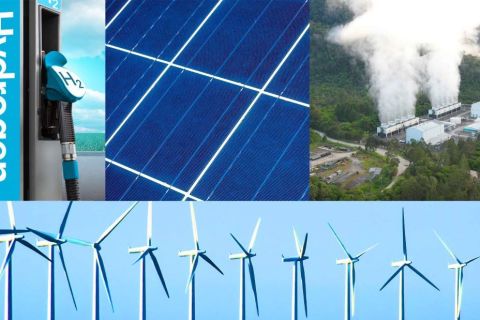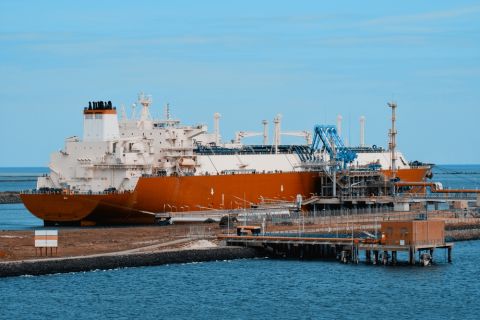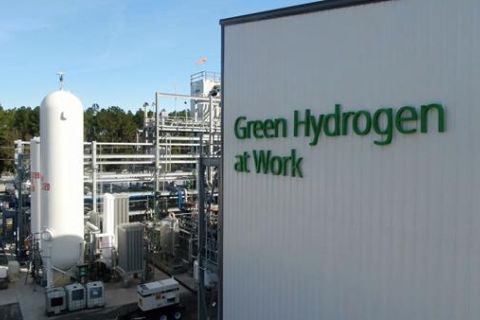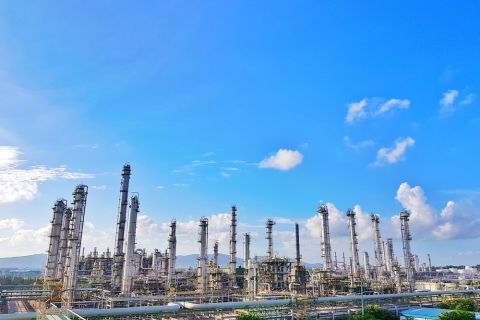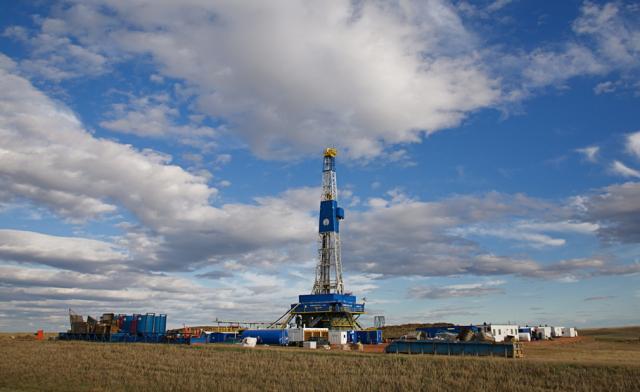
An oil rig is shown near Williston, North Dakota. Diverter use grows as E&P companies seek ways to improve fracture initiation points along ever-longer laterals. (Source: Tom Reichner/Shutterstock.com)
Learn more about Hart Energy Conferences
Get our latest conference schedules, updates and insights straight to your inbox.
- Diverter technology gains marketshare in horizontal completions.
- The Bakken Shale and Anadarko Basin report the highest usage.
- Diverter technology was identified on 15% of third-quarter 2017 completions.
You can’t win the lottery if you don’t buy the ticket. That aphorism applies to diversion technology in oil and gas. An unstimulated fracture initiation point costs the same as one that works but provides zero winnings for E&P companies.
Previous studies classified 30% to 45% of shale perforation clusters as nonperforming. In an industry that touts manufacturing-style economics as a necessity in tight formation development, those failed fractures suggest the industry has ground to cover to reach optimum completion effectiveness since the realities of economics threaten any manufacturing facility where 30% of output is defective.
Understanding that overview is the easy part. The hard part is the solution, which depends more and more on diverter technology, judging by comments from Hart Energy’s Heard in the Field surveys. Optimum diverter technology depends on completion design, stimulation methodology, zonal isolation and a host of formational factors.
Diverter technology in shale development involves having the diverting agent and its variously sized components follow fluid into the most active fracture initiation point, reducing flow and forcing remaining fluid and proppant through nearby, more poorly performing fracture initiation points. By using naturally biodegradable or water-soluble agents, the diverter does its work and then quietly fades away. Diverters have been shown to increase cumulative oil production up to one-third or more.
Crowd-sourced comments on diverter use have increased over the last nine months. Cross-checking those comments against FracFocus.org records gives incomplete but useful data on understanding who is using the technology and where.
The Bakken Shale features the largest identifiable instances of diverter use at 49% of horizontal completions, followed by the Anadarko Basin at 26%, Eagle Ford at 15% and Haynesville/ArkLaTex at 11%. The Permian Basin features similar gross numbers to the Anadarko Basin at 5%. Permian diverter use as a percentage of all completions lags behind on a relative basis.
E&P companies appearing at the top of the list for diverter use include Marathon Oil Co., Continental Resources Inc. and Whiting Oil and Gas Corp., all of which are active in the Bakken, while Marathon and Continental also use the technology in the Anadarko’s Mississippian play. In general, the top three users of diverter technology in any major tight formation play tend to represent 60% or more of deployments. E&P companies with the largest drilling programs typically reside at the top of the list.
A similar story is evident among oil service providers that supply diverter technology. The top five companies represent 64% of the market and include Halliburton (28%), Schlumberger (19%) and a virtual tie between Keane Energy, Liberty Oilfield Services and CalFrac at roughly 6% each. Those providers have a significant presence in the Williston Basin, where diverter use is the most common. In all, well stimulation companies provided 81% of diverter technology for clientele, with E&P companies purchasing the remainder directly from chemical providers.
On a quarterly basis, identifiable use of diverters increased from roughly 10% of completions reported in first-quarter 2017 to 15% in third-quarter 2017.
The assumption is that diverter use will become more common as E&P companies focus on completion optimization to enhance the economics of tight formation plays. The rising number of comments about diverters coupled with self-reported data suggest the industry is early in the evolutionary process.
Recommended Reading
Energy Transition in Motion (Week of March 22, 2024)
2024-03-22 - Here is a look at some of this week’s renewable energy news, including a new modeling tool for superhot rock.
Hirs: LNG Plan is a Global Fail
2024-03-13 - Only by expanding U.S. LNG output can we provide the certainty that customers require to build new gas power plants, says Ed Hirs.
CEO: Linde Not Affected by Latest US Green Subsidies Package Updates
2024-02-07 - Linde CEO Sanjiv Lamba on Feb. 6 said recent updates to U.S. Inflation Reduction Act subsidies for clean energy projects will not affect the company's current projects in the United States.
Plug Power Jumps on Govt Loan, Liquid Green Hydrogen Production Start
2024-01-23 - Plug Power has secured over $1 billion in government funding following liquidity issues amid supply challenges in the liquid hydrogen market in North America.
DOE Considers Technip, LanzaTech For $200MM ‘Breakthrough’ Technology Award
2024-03-25 - The U.S. Department of Energy funding will be used to develop technology that turns CO2 into sustainable ethylene.

